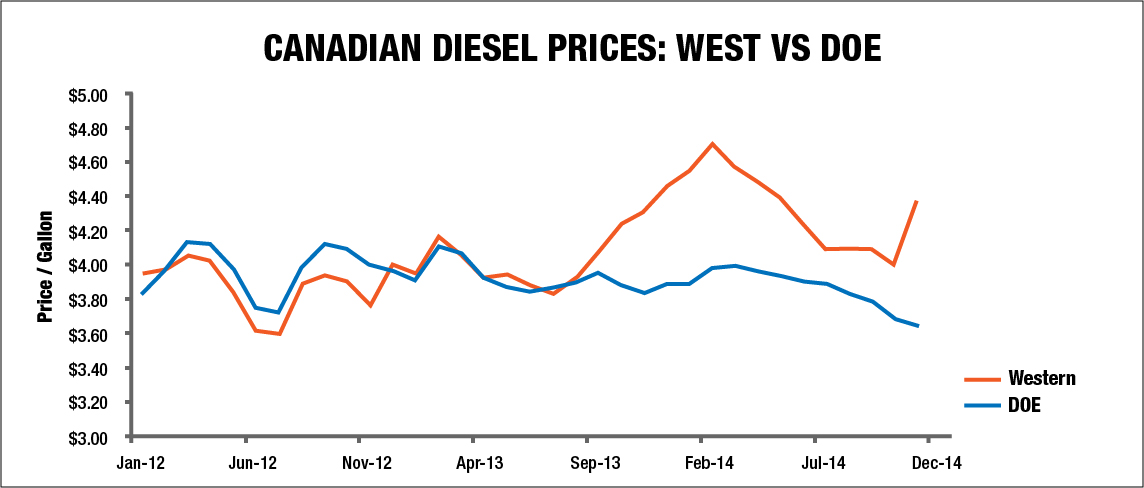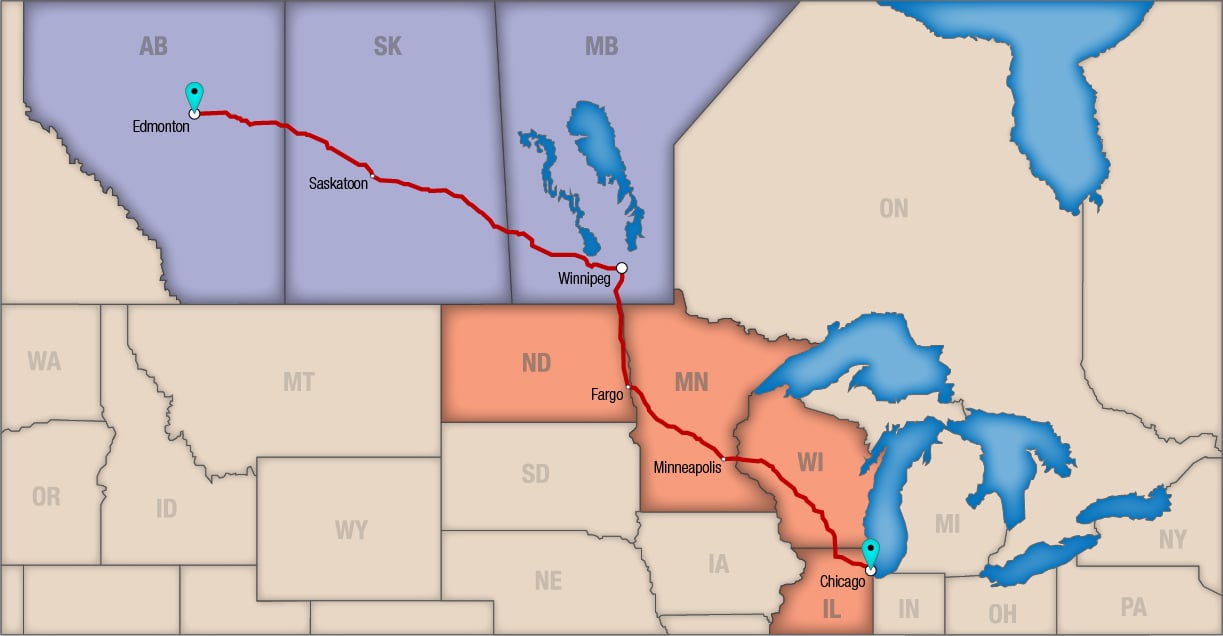Will The Trend In Fuel Surcharge Continue?
Crude oil is at its lowest level in years. Gas prices are falling across the country. The DOE National average for diesel fuel has been trending lower for several weeks, as have other Canadian traditional indexes. While fuel prices are trending downward in certain regions, they are actually trending upwards in others. This upward trend in certain regions has caused fuel surcharges to remain high despite some prices falling.
Trucking is a low margin business and fuel is a major cost component of a carrier’s total cost. Even the slightest move in fuel costs (up or down) can mean the difference between making a margin and losing money. Fuel surcharges are intended to offset those fuel cost changes, so the effect of changing fuel prices is neutralized. A fuel surcharge calculation that does not accurately offset fuel costs can be potentially fatal to a carrier.
Fuel Cost Trends Are Not Following Underlying Indexes
For more than a decade, Canadian carriers and shippers have used two primary indexes as a basis for computing fuel surcharge. The initial principal for the use of these indexes was sound: 1) they were published by a third party, and 2) they measured actual pump prices to compile an average. Historically fuel has moved in a strong correlation to these two primary indexes.
Since September 2013, fuel prices have broken their traditional trends. For instance, the gap between the primary U.S. index (DOE National Average) and Western fuel prices traditionally have been within 5 cents/U.S. gallon. During the last year, that gap has widened to approximately 45 cents/U.S. gallon - creating a gap 9 times its traditional size. In fact, in November 2014 the gap spiked to a record of 72 cents/US gallon!

The gap between the primary Canadian index and Western Canadian prices is equally important. Carriers operating in Western Canada purchase fuel at Western Canada prices. A surcharge calculated based on Eastern Canada prices is therefore no longer appropriate to offset the high cost of diesel in Western Canada.

Carriers & Shippers need to work together
With the significant variance in key Canadian and U.S. indexes, a significant shortfall of fuel surcharge revenue that would offset cost of fuel purchases has developed. Therefore, carriers and shippers must collaborate to find solutions to these fuel issues. Determining the right formula, based on real source data and actual fuel economy, is critical to help us match fuel surcharge with fuel cost.
Multi-Index Fuel Protects Carrier and Customer
In the end, the issue of fuel programs not reflecting actual fuel expenditures can only be solved by migrating to a formula that accounts for changes in fuel prices where the freight is picked up and delivered. In an ideal world, we would simply charge a fair markup on the actual fuel costs on a shipment by shipment basis. This is not practical in the real world.
Instead, a valid proxy is to measure costs in the origin and destination of a freight lane, and apply an index to a shipment based on a formula that respects the fuel purchases necessary to pick up and deliver it. Over time, actual fuel purchases will have a stronger correlation to the fuel surcharge, and that fuel surcharge will be more accurate to the fuel prices in the related regions to the shipment.
Example
A shipment originating in Chicago, IL and ending in Edmonton, AB will potentially purchase fuel in IL, MN, ND, MB, SK and AB. Consider using a U.S. index (like the DOE National Average) to represent U.S. purchases, and a Canadian index (like the Kent Marketing Western) to arrive at a blended average price. That price could easily be plugged into a formula to arrive at an appropriate surcharge applicable for the shipment in question. Over time, if the regional prices fluctuated up or down, the index would respond accordingly.

Conclusion: Multi-Index Fuel is the Answer
The best way to match actual cost to fuel surcharge is to set a matrix of fuel indexes and related equations to calculate fuel surcharge based on a weighted average anchored on fuel purchases along the route.
This suggested change will help fuel surcharges be more strongly correlated to fuel costs, insulating the carrier and customer from a cost they have has absolutely no control over, and ensuring sustainability in the industry.
Multi-index fuel is a more accurate way of calculating fuel surcharge. How do you think applying them would affect your business? PLEASE COMMENT BELOW